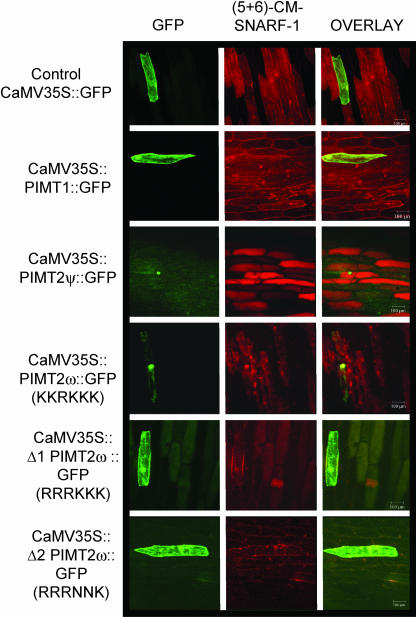Figure 3.
Introduction of constructs with the CaMV 35S driving expression of chimeric genes ultimately producing PIMT1 or PIMT2 isoforms fused at their carboxy terminus with the GFP indicated a nuclear localization for PIMT2 isoforms in onion epidermal cells. GFP fluorescence was found throughout the cytoplasm and the nucleus when GFP was expressed in native form (CaMV 35S:GFP) or in a carboxy-terminal fusion with PIMT1 (CaMV 35S:PIMT1:GFP), or versions of PIMT2ω in which two (CaMV 35S:Δ1 PIMT2ω:GFP) or four (CaMV 35S:Δ2 PIMT2ω:GFP) of the five Lys comprising the NLS were substituted. When the NLS was intact, and regardless of the presence (CaMV 35S:PIMT2ψ:GFP) or absence (CaMV 35S: PIMT2ω:GFP) of the differentially spliced fragment from intron 1, GFP was sequestered in the nucleus. (5 + 6)−CM−SNARF, (5 and 6) Chloromethyl-seminaphthorhodafluors.

